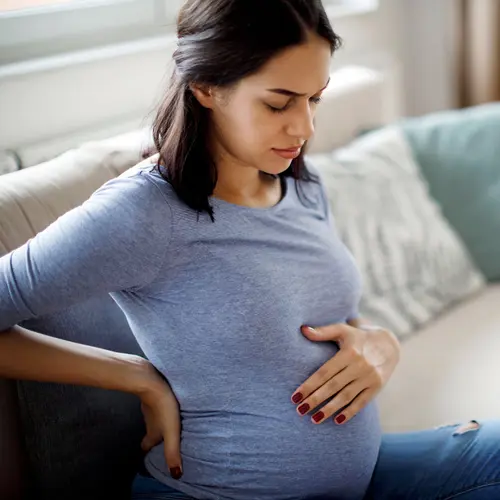Pregnancy changes your body, and it can take time to recover. Some women use a postpartum belly wrap after having a baby to help their muscles.
Studies show that wraps or binders might help with pain and healing after a C-section (cesarean section). They might also help support your organs and muscles as they move back into place after having a baby.
Benefits of Postpartum Belly Wraps
Postpartum belly wraps are sometimes called a belly band or a belly binder. Doctors suggest binding after major abdominal surgery, including after a C-section. There are benefits to using an after-birth belly wrap.
These include:
- Helps relieve pain
- Helps you get moving
- Helps increase blood flow
- Helps muscles and incision heal
- Lowers swelling from surgery
- Helps with posture
Supporting your pelvic floor. Your organs move and change during pregnancy to make room for a growing baby. During pregnancy, hormones also make your pelvic floor muscles relax. This can cause you to leak urine after having a baby.
Using a postpartum belly wrap can offer some compression to gently hold your muscles in place as your body heals.
Diastasis recti. During pregnancy, the two large muscles that run down either side of your stomach area split apart as your uterus expands and pushes against them. This is called diastasis recti. Usually, your separated stomach muscles will go back into place on their own by 8 weeks after giving birth.
Using a wrap can compress and support your muscles as they move back into place. A postpartum belly wrap isn’t a cure for diastasis recti. If you still have an obvious gap between your muscles after 8 weeks, you may have a condition called diastasis recti.
Although today’s belly wraps are trendy, they have actually been around for a long time, says Donnica Moore, MD, president of the Sapphire Women’s Health Group in Far Hills, NJ, and co-author of Women’s Health for Life.
“This is not a new thing,” she says. “Belly wraps were used for people with back pain because they increased abdominal support, which helped people with back pain get around better."
Jay Goldberg, MD, an OB/GYN in Beverly Hills, CA, agrees. "We have been prescribing abdominal binders for a long time. They have been used for tummy tucks and back problems, but with obstetrics these wraps help women recovering from a vaginal delivery or a C-section with their posture, abdominal support, and self-confidence.”
The gentle compression on the abs may help the uterus return to its normal size quicker, so new moms may get rid of their still-pregnant-looking-belly quicker, Moore says.
Another belly wrap bonus: “You may feel more comfortable and may feel like moving more, and the more you move and exercise, the quicker you get your figure back,” Moore says. He says women can put it on after delivery ends and wear it for 4 to 6 weeks after delivery to reap the maximum benefits.
Risks of Postpartum Belly Wraps
Postpartum belly wraps are usually used after you have your baby by C-section. While belly wraps have benefits, they might also have risks.
These can include:
- Pain
- Too much pressure
- Pelvic floor prolapse
- Itchiness or rash
Most of these risks happen because of wearing the wrong kind of belly wrap or wearing it too tightly. Postpartum belly wraps are meant to provide support to your recovering body. Wearing it too tight can do more damage than good.
Belly wraps aren’t waist trainers. Some people claim that a waist trainer can help you lose weight after pregnancy. There is no evidence of this, and a postpartum belly wrap isn’t a waist trainer.
Waist trainers are usually made of hard material that doesn’t allow your body to move and shift very well. This kind of pressure on your waist can cause damage and other risks, including:
- Difficulty breathing
- Organ damage
- Acid reflux
- Heartburn
- Nausea
- Fainting
- Varicose veins
- Digestion problems
Types of Postpartum Belly Wraps
There are many types of belly wraps, but not all of them are the best type to use after you have a baby.
Elastic wraps. The best kind of postpartum wrap is made of soft, elastic fabric. It should be flexible enough that you can breathe easily and move and shift. It should be long enough to comfortably wrap around your hips and your abdomen. You can buy an elastic wrap, or you can use a long piece of cloth.
Support belt. Adjustable support belts may be helpful for your hips and back to support good posture and sore muscles. Both good posture and hip support can help strengthen your pelvic floor.
Shapewear. Some shapewear companies make compression garments for pregnancy and postpartum. These are elastic but tight enough to compress. Choose your style carefully, though. Some full body suits or high-waisted underwear styles aren’t practical for wearing and changing sanitary pads during your postpartum period. Shapewear might also be too tight.
Safety of Postpartum Belly Wraps
Wearing a belly wrap in the postpartum stage isn’t for everyone. While they can lower pain from surgery and support your recovering body, there are some things you should think about.
Wrap up. The best way to wear a postpartum belly wrap is to use an elastic wrap and start at the hips and wrap up. Wrapping the wrong way can cause downward pressure on your pelvic floor and can cause prolapse.
Give yourself a break. Wearing a belly wrap all day is not a good idea. If you wear a wrap for too long, your abdominal muscles can weaken and cause more problems. Tight clothing should be worn in moderation.
Don’t use trainers, corsets, or cinchers. These tight, hard materials are not safe.


